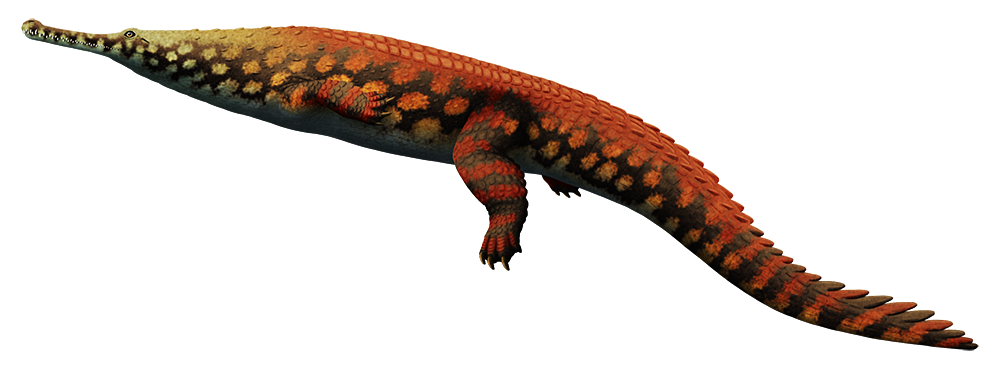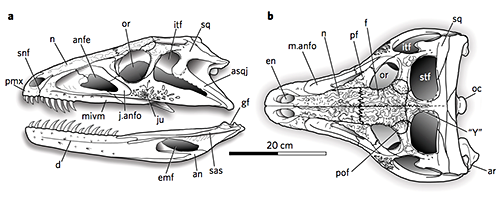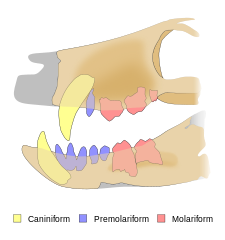Pseudosuchians – the evolutionary lineage whose only surviving modern representatives are crocodilians – first originated in the early Triassic and were once an incredibly diverse group. These croc-relatives experimented with fully erect limbs and bipedalism quite a few separate times, and on several occasions ended up evolving remarkably similar body plans to their distant cousins the theropod dinosaurs.
One of the earliest branches of the pseudosuchians to do this were the ornithosuchids, the best known of which is Riojasuchus tenuisceps here.
Living in Argentina during the Late Triassic, about 217-215 million years ago, Riojasuchus had a distinctive “hooked” upper jaw and two rows of osteoderm armor plates along its back.
It was only around 1.5m long (4’9″), much smaller than some of the other pseudosuchians and early theropod dinosaurs it lived alongside. Its front limbs were shorter than its hind limbs and it was probably a facultative biped – moving slowly on all fours, but getting up on just its hind legs for bursts of high speed running – which would have helped it avoid being eaten by those larger predators.
Like other ornithosuchids it had very strange ankles, with the bones in the joint articulating with each other the opposite way around compared to any other type of archosaur. The claws on its hind feet were also unusually tall and narrow, especially on the inner toes.
Its jaws were capable of delivering strong but somewhat slow bites, and the relative structural weakness of its narrow notched jaw would have made it difficult for it to deal with large struggling prey. It likely mostly hunted smaller vertebrates, and may also have been an opportunistic scavenger taking bites out of larger predators’ kills whenever it got the chance.













